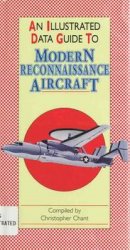INDUSTRIE AIR CHARTER, S. A.: France (1988-1993): lAC is established at Paris (LBG) in 1988 to fly charter and contract service flights on behalf of TAT French Regional Airlines, S. A. Operations continue during the remainder of the year and in 1989 with a pair of Nord 262s.
In the spring of 1990, plans are made to begin scheduled passenger services during the summer with a leased SAAB 340A. Iraq’s August invasion of Kuwait and subsequent negative economic and political developments force the company to temporarily give up its goals.
Once the Gulf conflict is resolved in early spring 1991, the regional obtains its SAAB on lease from Aigle Azur, S. A. and inaugurates scheduled flights. One Nord is withdrawn in 1992 as operations continue into 1993. Economic difficulties prevent the company from finishing the year.
INEX ADRIA AIRWAYS (INEX ADRIA AVIOPROMET): Yugoslavia (1968-1986). Adria Airways is reorganized and renamed in 1968 and made part of the government-controlled Interexport trading organization. Orders are placed for jet equipment with which to replace the four former KLM (Royal Dutch Airlines, N. V.) Douglas DC-6Bs operated since formation.
The first DC-9-32 is delivered on April 25, 1969 and is placed in service on European flights. Scheduled service is introduced in 1970 initially over a Ljubljana-Belgrade route. Coming into Rejeka Airport at Belgrade from Great Britain on May 23, 1971, a Tu-134 with 83 aboard crashes (78 dead).
As additional DC-9-32s are introduced in 1972-1975, scheduled domestic operations are increased as supplemental to the charter task; stops include Sarajevo, Skopje, Split, and Titograd.
Coming in from Tivat in heavy fog on October 30 of the latter year, a DC-9-32 with 5 crew and 115 passengers, strikes high ground 8 km. from Prague (75 dead).
En route from London (LHR) to Istanbul on September 9, 1976, Flight 475, a British Airways, Ltd. (2) HS 121 Trident 3B with 9 crew and 45 passengers collides in midair near Vrobec, Yugoslavia, with Inex Adria Flight 550. The DC-9-31 with 5 crew and 108 passengers is en route from Split to Bonn. Both aircraft crash and there are no survivors. The disaster is the worst midair collision in aviation history to date. Six years later, the tragedy will be reported in Richard C. Weston and Ronald Hurst, Zagreb One-Four—Cleared to Collide?: A Study of Human and Technological Conflict in Aviation (London: Granada, 1982).
General Manager Janez Nedog’s company employs 337 workers in 1977 and owns a fleet of 2 DC-9-51s, 3 DC-9-33s, and 2 DC-9-32F freighters. Total enplanements reach 728,722.
Airline employment is 362 in 1978. The fleet now comprises 3 DC-9-32Fs, 3 DC-9-33s, and 3 DC-9-51s. Orders are placed for 3 DC-9-80s. Passenger boardings climb 19.3% to 902,767. On total revenues of $45 million, a $2.1-million profit is revealed.
The number of workers is increased by 11.9% in 1979 to 405. The company’s 20th anniversary, together with the 10th anniversary of the introduction of jet service, is celebrated throughout the year.
Cargo traffic soars 47.7% to 848 million FTKs and passenger bookings accelerate 1.2% to 913,845. A net gain of $5.8 million is posted on total income of $52.9 million.
In 1980-1981, three DC-9-33s and a DC-9-51 are retired as the first two DC-9-80s and a DC-9-30F are placed in service.
Having arrived from Ljubljana on December 1 of the latter year, an MD-81, with 7 crew and 173 passengers is placed into a holding pattern over Ajaccio. The aircraft descends through the minimum holding altitude and crashes into Mt. San Pietro, 40 km. S of its destination. There are no survivors.
Still, enplanements for the year total 949,520.
Bookings jump 12% in 1982 to pass the million mark in annual boardings for the first time (1,079,000); freight soars 41% to 1.62 million FTKs.
The workforce in 1983 is 509, a 1.2% boost. International scheduled service is begun over a route to Larnaca. Orders are placed for five Airbus Industrie A320s and the third DC-9-80 is delivered.
Passenger boardings grow 2% to 1,103,261; however, cargo declines 17.9% to 1.33 million FTKs. On revenues of $50 million, the net earnings are $574,000 and come on top of an operating gain of $7 million.
Cargo falls 20% to 1.07 million FTKs in 1984, but enplanements climb 9% to 1,197,000. A net $1.09-million profit is realized on top of an operating gain of $2.3 million.
The employee population grows to 662 in 1985 and the fleet now includes 2 DC-9-32s, a DC-9-33, 2 DC-9-51s, 1 MD-81, 3 MD-82s, and 2 de Havilland Canada DHC-7s.
Passenger boardings rise 6% to 1,267,204 and freight skyrockets a remarkable 77% to 3.01 million FTKs. Revenues increase 33.9% to $80.9 million and expenses climb 30.3% to $75.6 million; this balance produces profits of $5.23 million (operating) and $1.78 million (net).
In May 1986, the company becomes independent of the Inex group and its name is changed back to Adria Airways (Adria Aviopromet) (2).




 World History
World History









